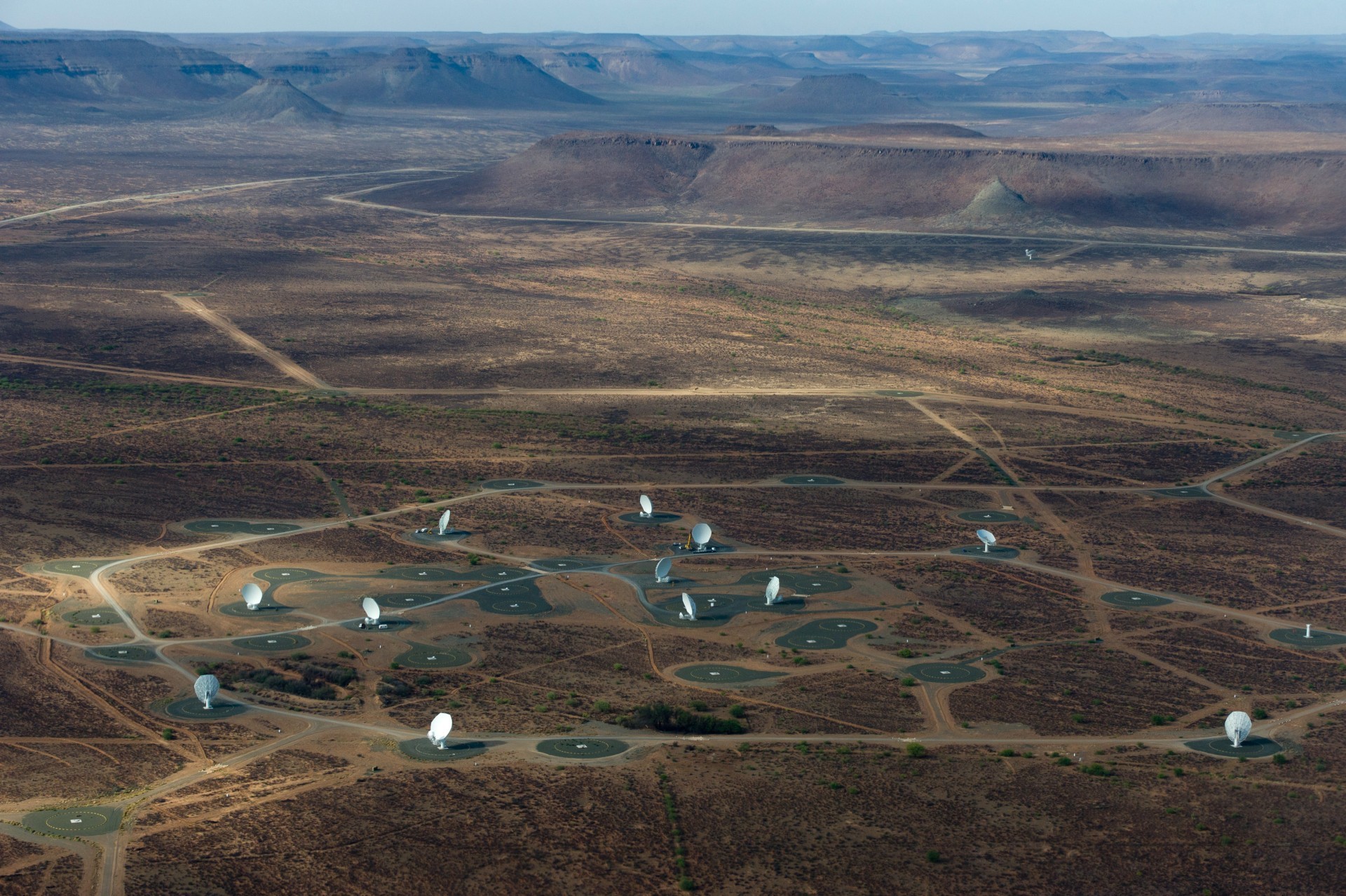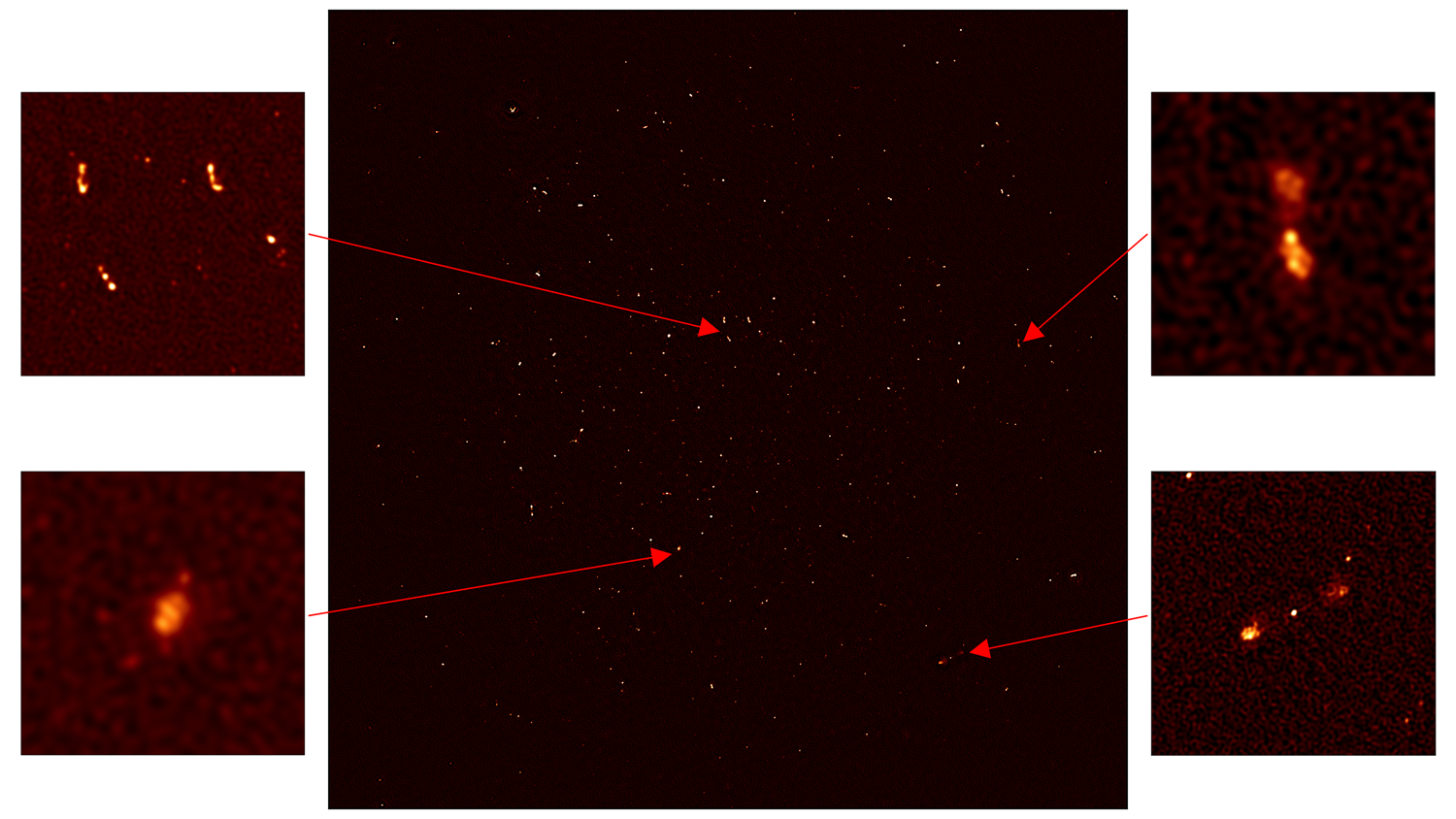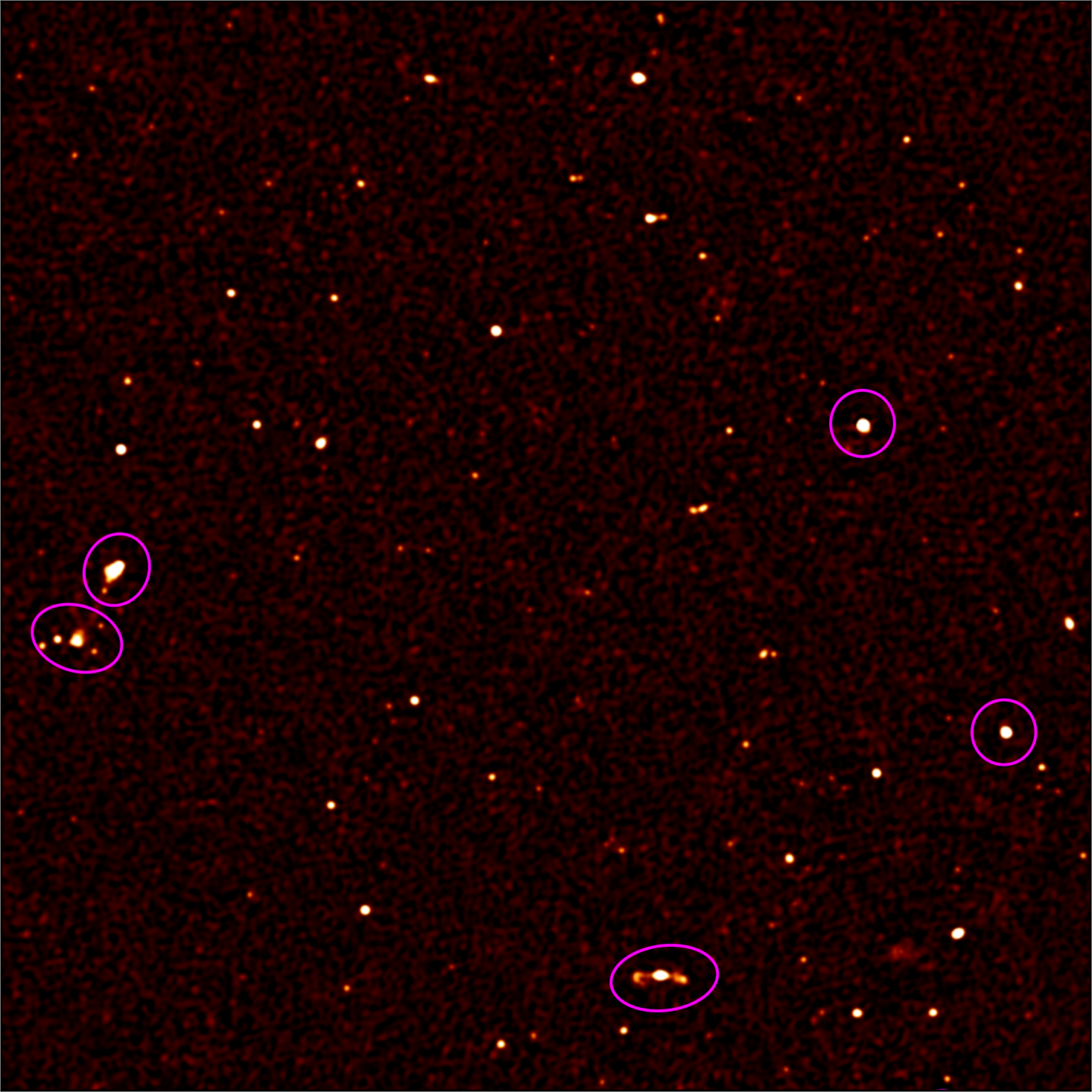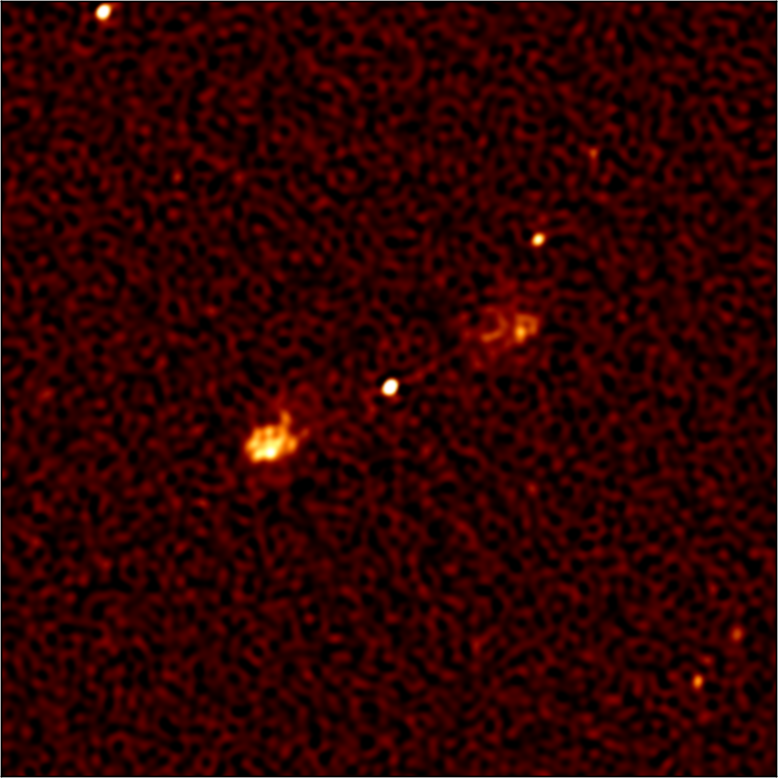The largest radio telescope MeerKAT launched in test mode at a quarter of the power
In the first session open 1230 new galaxies

Radio telescope MeerKat at the stage of construction. Photo: MeerKat / SKA South Africa
Even with a quarter power (16 of 64 antennas), the South African radio telescope MeerKat last Saturday showed its phenomenal power. The first published image shows approximately 1300 galaxies in a tiny corner of the starry sky, where up to this point only 70 galaxies were known. The first image from MeerKAT was published on July 16, 2016.
When all 64 antennas are commissioned, the MeerKat radio telescope will be part of the global SKA (Square Kilometer Array) radio interferometer with receiving antennas spaced more than 3000 km from the concentrated central core.
MeerKat in South Africa is one of two large SKA clusters, the second cluster will be located in Australia and New Zealand. Initially, these countries fought for the right to locate a radio interferometer, but in March 2012 the project organizers decided that the MeerKAT mid-frequency antennas were best placed in South Africa, and low-frequency antennas in South Africa and New Zealand. In both cases, the location of the equipment was selected away from large populated areas to minimize electromagnetic interference from broadcasting stations, television, radar, etc. The MeerKAT grille is installed near the village of Carnarvon, 600 kilometers north of Cape Town.
')
Additional SKA antennas are planned for another eight African countries. In total, about 100 scientific organizations from 19 countries participate in the Square Kilometer Grid project.

This is a large international project with a total budget of about $ 2.5 billion . The South African government, despite the difficulties in the economy, allocated $ 205 million to it.
The huge "virtual antenna" SKA consists of 3000 parabolic antennas and 2 million dipole antennas.

SKA parabolic and dipole antennas in Australia. Photo: MeerKat / SKA South Africa
It will have sensitivity tens or hundreds of times higher than any other existing radio telescope, including the world's largest radio telescope RATAN-600 of the Special Astrophysical Observatory of the Russian Academy of Sciences. This giant with a reflector mirror of 576 meters is located in Karachay-Cherkessia, not far from the village of Zelenchukskaya. The total area of the parabolic reflector ring is 20,400 m 2 .

Radio telescope RATAN-600
The radio telescope RATAN-600 operates in the radio wave range of 0.8-50 cm.
On July 16, 2016, the management of MeerKAT announced the completion of the first phase of the construction of the telescope and the commissioning of the first 16 radio antennas of the complex.
For the first test session, a relatively deserted part of the sky was selected, in which 70 galaxies were previously observed. This small fragment covers only 0.01% of the total area of the night sky.

Montage of the First Light image from the MeerKat radio telescope with four enlarged fragments. In the two fragments on the right, there are galaxies with massive black holes in the center; in the lower left corner is a galaxy about 200 million light-years away with a giant cloud of hydrogen. Photo: MeerKat / SKA South Africa
The radio telescope even with 16 of 64 antennas produced an amazing “picture”, on which about 1300 different galaxies are marked. The high resolution of the telescope allowed even a detailed look at some of them. Supermassive black holes are registered along the center of individual galaxies, the presence of which is indicated by plasma beams at near light speeds and the specific shape of galaxies.

An enlarged fragment of about 10% of the image of the First Light, it shows more than 200 astronomical objects (light points). Earlier in the area, only 5 objects were known (circled in purple). Photo: MeerKat / SKA South Africa

An enlarged fragment of about 1% of the image of First Light, it shows the object "Fanaroff-Riley Class 2" (FR2): a supermassive black hole in the center absorbs matter and spits out part of it in the form of thin plasma beams accelerated to near-light speeds (a bright point in the center ). Photo: MeerKat / SKA South Africa
“The observations we showed you today fill us with confidence that before the opening of SKA our MeerKAT will be the world's leading radio telescope after all 64 radio dish sets are installed,” said Justin Jonas, chief engineer of South African parts ska.
The images obtained with MeerKat turned out to be “much better than we expected,” added Fernando Camilo, chief researcher of the SKA project in South Africa. He added that even now with 16 antennas, MeerKat is the largest radio telescope in the southern hemisphere. After construction, MeerKat will become the world's most sensitive radio telescope in the L-band (decimeter band). In this range, it is possible to register neutral hydrogen, which, as a rule, is invisible in interstellar space. Neutral hydrogen atoms are recorded at the resonant frequency of the 1420 MHz hyperfine transition.

Radio telescope MeerKat. Photo: MeerKat / SKA South Africa
Already more than 500 research teams from 45 countries of the world have reserved slots for scientific measurements using MeerKat from 2017 to 2022.
The launch of the SKA observations is planned for 2019, and the full-power output is expected by 2024. Along with the construction of the radio telescope array, SKA engineers will have to solve the problem of processing and storing data, because the project requires recording up to 1 petabyte of compressed data per day . The largest radio telescope in the world will help verify the provisions of the general theory of relativity, collect data on the evolution of the universe and dark matter. The list of approved research projects for study at MeerKAT includes:
- gravitational radiation detection (Radio Pulsar Timing project);
- the study of neutral hydrogen in the early stages of the formation of the Universe (LADUMA project - Looking at the Distant Universe with the MeerKAT Array);
- search for the first light-emitting objects in the Universe at the early stages of its development (project MESMER - MeerKAT Search for Molecules in the Epoch of Re-ionisation);
- study of possible changes in the values of fundamental constants in the early Universe (project MeerKAT Absorption Line Survey);
- study of different types of galaxies and their formation (project MHONGOOSE - MeerKAT HI Observations of Galbytic Objects: Observing Southern Emitters);
- research of new and exotic pulsars (project TRAPUM - Transients and Pulsars with MeerKAT)
- a thorough study of the Furnace Cluster — the second largest cluster of galaxies within 100 million light years (project MeerKAT HI Survey of the Fornax Cluster);
- study of galactic structure and dynamics, distribution of ionized gas, recombination lines, interstellar molecular gas and masers (project MeerGAL - MeerKAT High Frequency Galactic Plane Survey);
- deep long study of the earliest radio galaxies (project MIGHTEE - MeerKAT International GigaHertz Tiered Extragalactic Exploration Survey);
- registration of powerful radio pulses, including gamma-ray bursts, X-ray binary systems and supernovae (the ThunderKAT project - The Hunt for Dynamic and Explosive Radio Transients with MeerKAT).
Source: https://habr.com/ru/post/396107/
All Articles